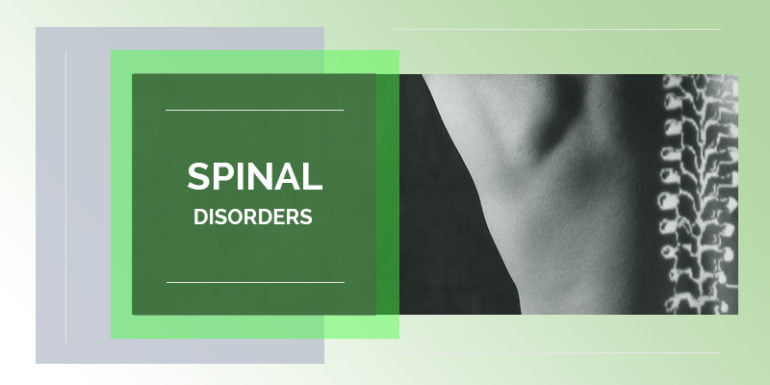
The spine consists of 33 vertebrae, in all, including those in the Sacrum and the Coccyx. The upper portion of the spine, called the cervical region, is made up of 7 vertebrae (C1-C7); while the middle portion of the spine consists of 12 vertebrae (T1-T12) and is termed the Thoracic region.
The next 5 vertebrae (L1-L5) make up the Lumbar region. The Sacral region and coccygeal region are made up of 5 fused vertebrae (S1-S5) and 4 fused vertebrae (Co1-Co4), respectively.
The vertebral body supports most of the load carried by the spine. It also serves as a resting-place for the intervertebral discs. Muscles and ligaments used in rotation and bending of the body are attached to the spine by tiny pillar like structures called the transverse processes (2 per vertebra).
These extend laterally from the point at which the pedicles and laminae are joined. The pedicles and laminae, connect the vertebral body and transverse processes, forming the vertebral arch. This arch, together with the vertebral body, forms the vertebral foramen, which is the center hole in each of the vertebrae.
The alignment of the vertebral foramina in the spine makes up the vertebral canal through which the central nerve runs. Including the two transverse processes, there are seven processes on a typical vertebra. These processes are either lever-like to enable the attachment of muscles and ligaments (e.g. the transverse processes) or articular (meaning joining) to help create bony joints.
There are four joining processes on each vertebra, two facing up and two facing down. The joining processes of adjoining vertebrae form joints that limit movement of the vertebrae, thereby providing stability to the spine. Another vertebral process is the spinous process.
The spinous processes vary in size, shape, and direction from one region of the spine to the next. Like the transverse processes, the spinous processes act as levers to which muscles attach. However, these muscles control posture and movements of the spine. These spinous processes are the bones that can be felt as protrusions down the center of the back.
Each vertebra has a thin outer layer of compact (cortical) bone, which encases a soft, trabecular (cancellous) bone containing red bone marrow. The compact outer shell is thin on the discal surfaces but becomes thicker in the arch and its processes.
In between each of the vertebra are intervertebral discs, which act as shock absorbers for the spine. An outer layer called the annulus fibrosus surrounds each disc. Cartilage plates positioned on the top and bottom of the disc act as a barrier between the disc and the vertebral body.
The interior of the disc consists of a soft, jelly-like substance called the nucleus pulposus. The nucleus pulposus is highly elastic with high water content. It gets nutrients from tiny blood vessels in the annulus fibrosis and the surface of the vertebral body.
In general, the intervertebral discs allow free movement of the back by adding flexibility to the spine.
CervicalVertebrae: There are 7 cervical vertebrae named C1 to C7. The specialty of each vertebra is the presence of a small hole (foramen) in each of its transverse processes. These holes or foramina transmit vertebral blood vessels, which supply the upper part of the spinal cord and the back of the brain. Furthermore, each of the articular processes is angled so as to permit movements of the head.
Thoracic Vertebrae: There are 12 thoracic vertebrae, named T1 to T12. The T1-T10 vertebrae of the thoracic region have a flat surface called facet on the transverse processes, which joins with the back of the ribs. The vertebral foramina are circular-shaped, and their vertebral bodies are heart-shaped. The thoracic vertebrae also have very long, slender spinous processes, which are directed downward.
Lumbar Vertebrae: There are five lumbar vertebrae, named L1 to L5. The vertebrae in the lumbar region of the spine are characterized by their massive, kidney-shaped vertebral bodies. Their vertebral foramina vary from oval-shaped to triangular-shaped, and their spinous processes are short and rectangular.
Sacral Vertebrae: Five sacral vertebrae are fused together to form what is called the sacrum. The sacrum is wedge shaped and supports the weight of the whole body, spreading it across the hipbones and the legs.
Coccygeal Vertebrae: The Co1-Co4 coccygeal vertebrae consist of four vertebral bodies that are fused together to form the coccyx. The coccyx is also known as the tailbone. It only provides attachment for pelvic (hip) muscles and ligaments and do not bear weight.
Conditions of the spine can arise in any part of the spine. Symptoms vary depending on the region affected and the severity of the condition. Most symptoms arise as a result of compression of the spinal cord itself, or the nerves running out of the vertebral foramina.
When a spinal injury occurs, there are many types of non-surgical treatments that can be applied, such as medication, physical therapy, or injection therapy. Surgical options are then considered as a last resort for treating a spinal injury.
One surgical solution for a herniated disc is a disectomy. A disectomy is an operation performed to remove the herniated portion of the disc, thereby relieving any pain associated with the ruptured disc.
People with spinal stenosis can receive a laminectomy, which is an operation used to remove the vertebral lamina in order to enlarge the opening through which the spinal cord and spinal nerves run.
Resulting from a disectomy, there may be abnormal movement between the two adjacent vertebrae. This is due to the missing intervertebral disc that had acted as a cushion between the bony vertebra.
In this situation, a procedure called spinal fusion can be implemented to fuse the two vertebrae together. This is accomplished by surgically applying bone graft and/or spinal instrumentation.
The spinal instrumentation would be used to stabilize the graft or fixate the bones while solid bone mass forms. The bone graft may be an autograft, bone taken from patient’s own body, or bone obtained at a bone bank.
Instrumentation applied in spinal fusion in the cervical region may consist of plates along with screws, wires, or bone plugs for bone graft. Thoracic and lumbar spinal fusion may utilize rods, hooks, screws, wires, and bone grafts.
